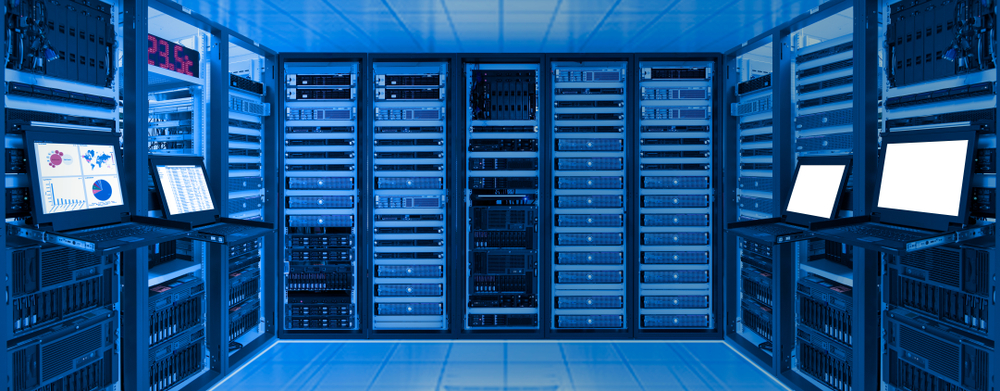We discuss the following topics in this blog:
- Changing network topologies pushing out to the edge.
- Infrastructure backing fibre optics.
In addition to these topics, we shall also be answering the following FAQs:
- What is WiFi?
- What is an Optical Fibre Cable?

Jitendra Balakrishnan, CTO, Connectivity Solutions at STL: From the rollout plans, you’re talking about fiber something that you are investing and trying to push it out, you actually increasing capacities or network topology is changing? Any of the plans that you’re seeing in terms of how you need to deploy your network is it gonna be further pushing out towards the edge? Is it more on the access and I’m just trying to I’m just curious to know how that’s affecting XL’s plans.
Gede Darmayusa who is the CTO, XL Axiata: Yes, we are expanding the data center to the edge as part of our long-term strategy. And at the same time, we also the cord of the fiber together to increase the capacity and also for residential protection. We understand that still being a data center of course life will be easy is we have so many sites in the region or in the rural that can be converted to small data centers. But connecting that to fiber is not simple as building the sites. We try to balance this out whether to balance this out. In the past, we have only like three sites as some main big data centres.
Now, last year we expanded it to 5 to 7 data centers. Today we have around 11 data centers which is in a smaller size. At the same time, we need to slow down this a bit because suddenly, in the middle, We realized that we don’t have enough infrastructure there. The infrastructure to support that they’re to bring the traffic back to the Internets of fiber Optic is still the challenge.
We tried as much as possible fill our own which are really punched our Capex lock and at the same time, we assess partnership with a party. We were in a core or if not, we cannot get the core reverse case. We get the capacity so that’s basically is our priority now we built our own if we have capex. Second, is we lease the core, the duct fiber. Then the third one is the capacity. So which one? This basically gave us more benefits we assessed. But number one is we need to have our own core. So we have flexibility when we want to expand in the future.
Watch the complete story
FAQs
What is WiFi?
Put simply, WiFi is a technology that uses radio waves to create a wireless network through which devices like mobile phones, computers, printers, etc., connect to the internet. A wireless router is needed to establish a WiFi hotspot that people in its vicinity may use to access internet services. You’re sure to have encountered such a WiFi hotspot in houses, offices, restaurants, etc.
To get a little more technical, WiFi works by enabling a Wireless Local Area Network or WLAN that allows devices connected to it to exchange signals with the internet via a router. The frequencies of these signals are either 2.4 GHz or 5 GHz bandwidths. These frequencies are much higher than those transmitted to or by radios, mobile phones, and televisions since WiFi signals need to carry significantly higher amounts of data. The networking standards are variants of 802.11, of which there are several (802.11a, 802.11b, 801.11g, etc.).
What is an Optical Fibre Cable?
An optical fibre cable is a cable type that has a few to hundreds of optical fibres bundled together within a protective plastic coating. They help carry digital data in the form of light pulses across large distances at faster speeds. For this, they need to be installed or deployed either underground or aerially. Standalone fibres cannot be buried or hanged so fibres are bunched together as cables for the transmission of data. This is done to protect the fibre from stress, moisture, temperature changes and other externalities.
There are three main components of a optical fibre cable, core (It carries the light and is made of pure silicon dioxide (SiO2) with dopants such as germania, phosphorous pentoxide, or alumina to raise the refractive index; Typical glass cores range from as small as 3.7um up to 200um), Cladding (Cladding surrounds the core and has a lower refractive index than the core, it is also made from the same material as the core; 1% refractive index difference is maintained between the core and cladding; Two commonly used diameters are 125µm and 140µm) and Coating (Protective layer that absorbs shocks, physical damage and moisture; The outside diameter of the coating is typically either 250µm or 500µm; Commonly used material for coatings are acrylate,Silicone, carbon, and polyimide).
An optical fibre cable is made up of the following components: Optical fibres – ranging from one to many. Buffer tubes (with different settings), for protection and cushioning of the fibre. Water protection in the tubes – wet or dry. A central strength member (CSM) is the backbone of all cables. Armoured tapes for stranding to bunch the buffer tubes and strength members together. Sheathing or final covering to provide further protection.
The five main reasons that make this technology innovation disruptive are fast communication speed, infinite bandwidth & capacity, low interference, high tensile strength and secure communication. The major usescases of optical fibre cables include intenet connectivity, computer networking, surgery & dentistry, automotive industry, telephony, lighting & decorations, mechanical inspections, cable television, military applications and space.












